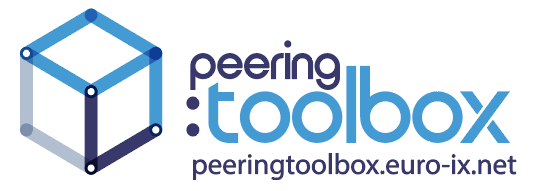Table of Contents
Seeking more peers
(NEW CONTENT)
Once the first peers have been established, and the network operator has got both transit connectivity and connectivity to an IXP and/or private peers, the next step for any newcomer is to start seeking more peers. This section looks at some of the possible strategies the peering team could consider.
Waiting for new peers
The policy of sitting back and “hoping they will show up” is rarely going to be successful and is not recommended. While other entities will come along and say “we would like to peer with you”, they are looking at it more from the point of view of what they will gain, not what you will gain.
All network operators need to understand their traffic flow, what content their customers consider is most popular, and then start designing a strategy to optimise the path between the content and their end-users (the eyeballs). And this means minimising the infrastructure hops and dependencies between the source and the destination. This is done by obtaining direct peering (either private or over an IXP or both) with the operators of greatest interest.
Content providers and content distribution networks ideally would like to have all the consumers of their content directly connected, but clearly this doesn't scale - so having presence as close to the end-user as possible is the next best option, and that means direct peering between the access provider and the content infrastructure operator.
And all this means promoting the network everywhere. Peering Coordinators have an important role at each network operator, as they both plan the strategy for optimising traffic flow between external networks and the operator's customer, as well as approach and negotiate peering agreements with other parties.
Searching PeeringDB
Trawling through the PeeringDB looking for operators is one strategy, especially for seeking peering at private datacentre facilities the operator is present at - it's rare that the data centre operator will provide a customer contact list for someone to use to go ask for peering. Hence the value of PeeringDB.
PeeringDB is also valuable to show what the most popular interconnect locations are (private datacentres and IXPs) and that can also help guide a network operator as to what its strategy should be as it expands its network to other locations both in-country and internationally.
Peering Personals
The other very effective way of gaining more peers is to take part in an activity known as Peering Personals. These form part of almost every network operator group (NOG) meeting today, and allows the operator to display a one page slide showing the operator's PeeringDB entry - the key items needed to promote the network's presence in various locations, the traffic volume and ratio, and the peering policy. The representative of the operator (the peering coordinator) gets exactly one minute to present their one slide, before they are ushered off the podium to make way for the next operator.
A typical Peering Personal slide might look like this (excerpt from the Peering Personals sessions at APRICOT 2023 in Manila, Philippines):
A full example of what typically happens at Peering Personals sessions can be seen by consulting the APRICOT 2023 Peering Personals consolidated slide deck. It shows the different types of infrastructures that would present, and the typical format of the Peering Personals sessions. In the case of APRICOT 2023, Peering Personals occupied around 30 minutes in each of the 3 Peering Forum activities at the conference.
Once the value of this “speed dating” for network infrastructure operators is understood by the community, the one minute speaking slot becomes in very high demand, and the session can occupy a significant part of any network operator group meeting.


